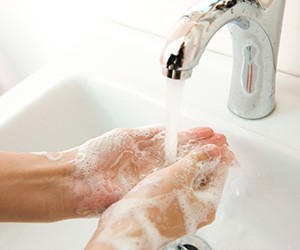The flu and cold season wreaks havoc on the workforce each year.
The Centers for Disease Control and Prevention (CDC) estimates that in the U.S. alone, employers experience $227 billion in lost productivity per year due to employees being absent from sickness or what is known as presenteeism, meaning employees show up sick to work and do their job halfway.
The CDC also reports that 17 million workdays are lost each year in the U.S. due to the flu alone.
“There’s a huge financial impact from hygiene, and I don’t think people realize that,” said Carrie Schuster, brand communications manager of sustainability, services and hygiene at Tork, a brand from Essity—a global hygiene and health company that produces and sells products and solutions for various industries.
[Meetings Today Blog: Put on Your Own Oxygen Mask First]
Beyond the office environment, the flu and cold season also greatly affects those who travel for business or the meeting and event planners and attendees who travel to and network at meetings and events.
Fortunately, there are measures that can be taken to protect meeting and event planners and attendees from catching and spreading germs and illnesses. According to the CDC, the simple act of handwashing can prevent 20 percent of respiratory infections such as the common cold and the flu.
It’s also the single most effective way to reduce the spread of illness.
“Hand hygiene is especially important at large conferences and events, as illnesses can quickly spread through handshakes and touching common surfaces,” Schuster said. “To prevent the spread of germs from person to person, conference goers should wash their hands after shaking hands and restroom visits and before and after meals. Other helpful tactics include using paper towels to open doors and turn off faucets, and using hand sanitizer when restrooms are not readily available.”
Below, Schuster relays tips on how to encourage handwashing and other hygienic practices.
1. Hang up clear signage.
Simple reminders of when people should wash their hands can be effective. Put up clear signage in restrooms and other high-traffic areas to remind people to wash their hands after coughing or sneezing, before and after they prepare food, and after using the restroom.
Signage can even include tips on how to wash your hands properly:
- Lukewarm water and soap for 20-30 seconds.
- Scrub on all sides, under fingernails and between fingers.
- Shake your hands in the sink before drying with a paper towel.
“The shaking helps eliminate needing to use multiple paper towels,” Schuster explained.
2. Put out hand sanitizer.
In places where soap and water aren’t typically available, put out hand sanitizer dispensers in clearly visible locations—near entrances of buildings and rooms to ensure occupants and visitors will be more likely to sanitize their hands. A study from The Journal of the American Osteopathic Association shows that optimizing dispenser placement increases usage by more than 50 percent.
[Related Content: A Brilliant (Yet Simple) Sponsorship Opportunity – Hand-Sanitizing Stations]
3. Be aware of restroom dispenser placement.
“I’ve been in restrooms myself where you wash your hands then have to walk all the way across the restroom to get a paper towel,” Schuster said. “In the meantime, you’re dripping water across the floor, which is a safety hazard.”
Make sure paper towel dispensers are at an optimum distance from sinks while being near the exit. That way, people can turn off the faucet, grab the door handle as they’re going out with a paper towel, then dispose of it in the garbage bin nearby.
“That’s critical,” Schuster explained. “And you don’t see it very often. When an architect is in there or a contractor is putting up dispensers, they don’t often have that information. It’s about educating the distributor and facilities team on the most hygienic options for them.”
Why It’s So Important
Handwashing can be a critical part of business, unbeknownst to employers and meeting planners. Essity has research that shows people feel it’s more professional to have proper hand hygiene. Those who wash their hands were thought of as more trustworthy and considerate.
“It affects employee satisfaction,” Schuster explained. “People are happier at work when they feel they have the right facilities to keep them healthy.”
Editor’s Note: This article was first published on Global Handwashing Day, Monday, October 15, 2018. General information about Global Handwashing Day is available on the official website for the day.
Tork also maintains its own page with specialized content in recognition of Global Handwashing Day.







